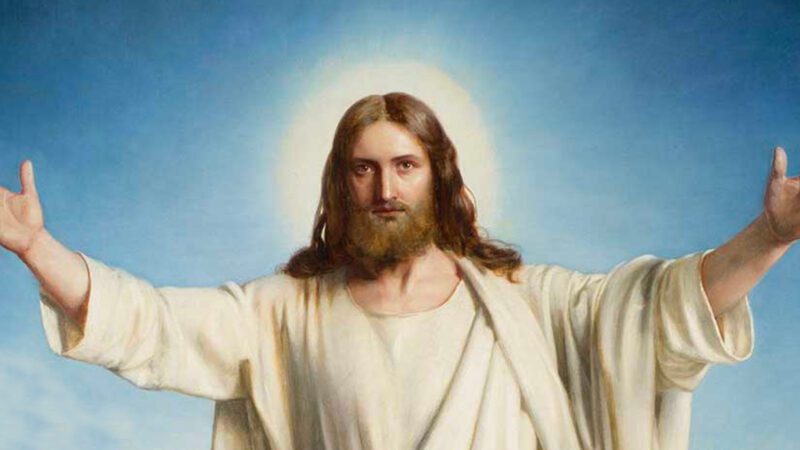Saint Patrick’s Day has become one of the biggest celebrations of the year, whether you are Irish or just claim to be on his feast day. On this episode of The Catholic Talk Show, the guys drink some green beers and talk about the REAL Saint Patrick and how his feast become so popular!
In this episode we’ll cover:
- What Was Saint Patrick’s Birth Name?
- Was Saint Patrick Even Irish?
- Is The Shamrock A Good Analogy For The Trinity or Heretical?
- Why Drinking Was Illegal on Saint Patrick’s Day In Ireland
- PLUS: The Irish Saint Who Discovered America 1,000 Years Before Columbus!















Would be great if you would closed caption these.
I’m interested in looking up some of the other saints you mentioned in this broadcast. It would be great if you would include a list of key topics associated with each broadcast, with links to more info. In particular, I’d like to be able to view the name of the patron saint associated with mental health. Can’t understand the name spoken.
The Irish went crazy standing in line when the first Krispy Kreme opened!
Armagh is in County Armagh.
It is NOT the Church of England. It is the Church of Ireland.
Here is more information about Saint Dymphna
https://www.ucatholic.com/saints/saint-dymphna/
https://www.ucatholic.com/prayers/the-chaplet-of-st-dymphna/
https://youtu.be/NEVW75FfJjc
More fascinating information!
I am five minutes in and disgusted by this. I am an Irish Religious and find this racially offensive and disrespectful to my Faith.
I don’t even know where to begin with your historical ignorance. This is (literally) bar room chatter. I would expect this kind of behaviour from “dudes smokin pot an’ havin bud” but you claim to be apologists. As for the behaviour of the Catholic priest, unsuitable.
I have long known Americans lack of solid knowledge of history and geography but this reminds me of the Jay Leno street interviews of people on the streets of the USA.
Your assumptions are enormous!
Your mistakes aren’t just about St Patrick but in general, including geography, language, history and culture.
This is painful.
Ryan confused St. Columba with Columba Marmion.
Reasons for Skepticism
The general tenor and scholarship of such articles obviously gives me pause, as well as some other facts. For one thing, I am very familiar with the writings of St. Patrick. He left only two authentic documents behind, theConfessio and the Letter to Coroticus. In neither of these does Patrick give any indication that his name is other than Patrick. He begins hisConfessio with the beautiful and humble phrase, “Ego Patricius, peccator rusticissimus et minimus omnium fidelium”, “I am Patrick, a sinner and a simple rustic, the least of all believers.” Nowhere in the Confessio or his other letter does he give his name as anything else. So at
Shoddy Research
The Maewyn Succat theory is characterized by shoddy research and the repetition of unfounded assertions. As I searched, I found that every article or essay which held to the Maewyn Succat theory did not cite any source for their assertion; or, if they did, they cited a source which itself was a secondary source and offered no primary reference or did not assert what the authors assumed. For example, the Wikipedia page or St. Patrick says Patrick was originally named Maewyn Succat and offers a citation. The citation leads to the website Sacred Space, run by the Irish Jesuits.The Sacred Space page cited on Wikipediagives several details about St. Patrick’s life, but does not include any claim that his name was Maewyn Succat. And even if it did, the Sacred Space article is not a primary source; it’s simply a contemporary article written by some Irish Jesuit. So the Wikipedia claim that Patrick was named Maewyn Succat is a dead end. Most of my other attempts to track this down were as well. People are just repeating things without knowing where they came from.
But it did come from somewhere. People did not just start repeating the Maewyn Succat theory in a vacuum. Where was this coming from?
The Hymn of Fiacc
St. Fiacc, Bishop of Leinster (d. 520) was born from a Christian family who had been converted by St. Patrick. He had met the saint personally and is known for composing a metrical hymn in honor of St. Patrick. The hymn begins with the lines:
Patrick was born at Emptur:
This it is that history relates to us.
A child of sixteen years (was he)
When he was taken into bondage.
Succat was his name, it is said;
Who was his father is thus told:
He was son of Calpurn, son of Otidus,
Grandson of Deochain Odissus.
The relation between “Emptur” and Bannavem Tiburniae is uncertain; notice also that grandfather Potitus has become Otidus, and an additional relative Odissus is added. This is an example of what I would call the extreme elasticity surrounding Patrick’s genealogy that anyone who has seriously studied the saint will acknowledge.
If there is an argument that Patrick’s birth name was other than Patrick, I think Fiacc’s poem would provide the strongest evidence.
Conclusion
Why do I seriously doubt Patrick was named Maewyn Succat? Just to be clear, I have no stake in Patrick not having a Gaelic name or something. It’s really neither here nor there; I don’t care if Patrick’s real name was Maewyn any more than I care that St. Peter’s real name was Simon. The reason I oppose this theory is because it is based on shoddy research and arbitrary nomenclature promoted by ignorant people looking for click bait. Just to review my reasons for opposing this theory:
(1) There is no primary source evidence that Patrick was named anything other than Patrick. Zero.
(2) Fiacc’s meter, written 50-60 years after Patrick’s death, mentions the name Succat but tentatively, suggesting “it is said” but gives no first hand knowledge of the fact. And he omits any mention of Maewyn.
(3) It makes no sense culturally or linguistically that Patrick’s Roman family would give him a Gaelic name. But it makes perfect sense that he’d be named Patricius.
(4) It makes no sense that his Christian family would name him after a druidic war god.
(5) There’s no documentary reference to Patrick’s ordination, let alone that he changed his name on the occasion. Stories of Patrick’s ordination (sometimes said to be by St. Germanus, sometimes by Pope St. Celestine) come from later hagiographies.
(6) The only other names given for Patrick do not appear in history until over two centuries after Patrick’s death.
(7) These names may not be proper names at all but titles or nicknames given by the Irish or the Druids.
(8) These names may have been given posthumously.
(9) “Maewyn Succat” is not one of the names mentioned in either source; it is an amalgamation of two other separate names (Magonus and Succetus).
(10) This amalgamation is totally arbitrary because it omits the third name, Corthirthiacus.
(11) Bieler, the translator of Tírechán, also thinks insisting on this nomenclature is selective and arbitrary.
(12) Even if Tírechán and Muirchú were actually insisting that Patrick’s given name was Maewyn Succat, this comes from two 7th century hagiographies which are generally not regarded as historically reliable sources of information about the historical St. Patrick.
(13) Nobody – or at least very few people – who assert the Maewyn Succat theory bother to track down its source. They just copy and paste and move on.
No, St. Patrick was not named Maewyn Succat, and I am fairly certain it s safe to insist on this.
+AMDG+
https://thosecatholicmen.com/articles/irish-on-st-pats-day/?utm_source=Those+Catholic+Men+-+Newsletter&utm_campaign=67a0e232a8-EMAIL_CAMPAIGN_2019_03_28_12_36&utm_medium=email&utm_term=0_878486e948-67a0e232a8-318186673&goal=0_878486e948-67a0e232a8-318186673&mc_cid=67a0e232a8&mc_eid=53c9dcc735
Great two minute read to add to the thoughts you guys had on St. Pats. Keep up the great work.
Hello Fellow Irishmen, Erin Go Bragh!
I learned that Patrick or pater, wasn’t the name he was born with in grade school. I went to Catholic School. I just don’t remember what they said his name was before he had his vocation as St. Patrick. I do remember it was Latin, and we were also taught his family was Roman. You jogged some really old memory cells. It was nice to learn his name again. I do remember the other story was that St. Patrick drove the snakes out of Ireland. A legend to go along with the fact that there may be few to none there.
He went into conversion with a vengeance or with the zeal of St. Paul.
I am not a fan of beer in any color but it brings back all the pub walking we did to celebrate when I was younger. It was nice to learn about other Irish saints. St, Brendan, St. Dymphna, St. Bridget, St. Columba, etc. The Book of Kells is supposed to be a beautiful representation of illumination. Mystical and magical. It was nice to learn that St, Dymphna is the patron saint of mental health disorders such as depression, anxiety, etc. Mental health disorders are on the rise and not just within the aging population.
There is a legend of St, Bridget when she was a young girl getting water from a community well she fell asleep had had a vision of Mary. She was poor and woke up wrapped in a beautiful cloak. The details are hazy with me as I heard the story decades ago.
Thank you for celebrating Catholicism with these podcasts!
God bless us all!
We don’t call Irish brogue and accent, just the brogue. My Irish antecedents are on the maternal side.